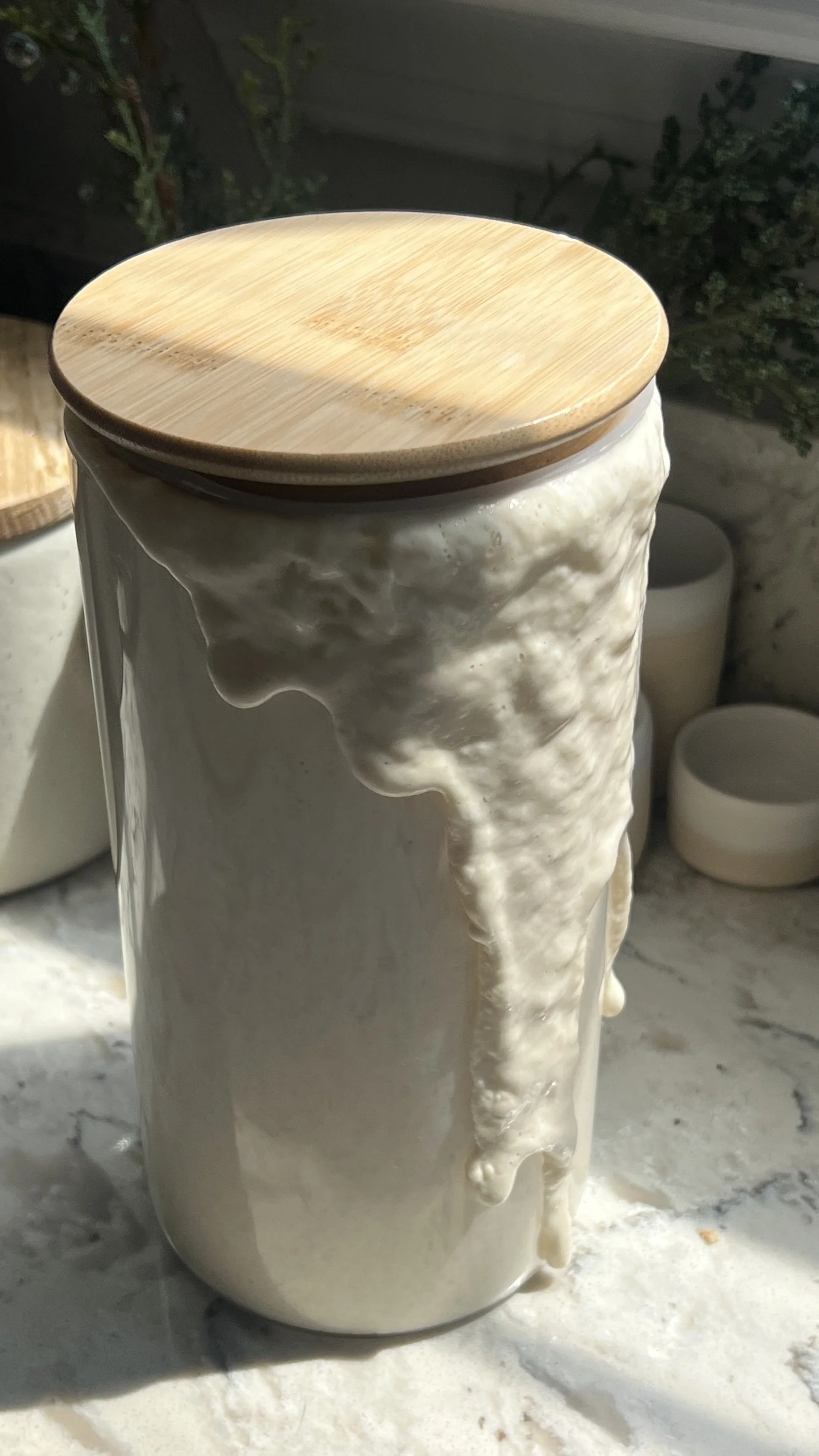Homemade Sourdough Starter
Ready to dive into homemade bread-making? My guide to making your own sourdough starter is perfect for beginners and seasoned bakers alike. With just flour and water, you can kickstart fermentation and create a bubbly, tangy starter that's the secret to delicious sourdough bread. I'll walk you through the simple steps and give you tips for maintaining your starter. Get ready to bake your own artisanal bread at home—it's easier than you think!
If you try out this recipe, I’d love to see it! Leave a comment with a star rating below and tag @wellmadebykiley on Instagram and hashtag it #wellmadebykiley
Ingredients You Need:
Full ingredients and recipe are in the recipe card below. Read through this section for all the ingredients substitution and baking tips!
Bread flour
Water
Tips for making Homemade Sourdough Starter:
Use Quality Ingredients: Start with good quality flour and water. Unbleached all-purpose flour, bread flour, or whole grain flour (such as whole wheat or rye) work well for feeding your starter.
Consistency is Key: Maintain a consistent feeding schedule for your sourdough starter. This helps establish a healthy microbial community and encourages fermentation.
Keep it Clean: Use clean utensils and containers when feeding your starter to avoid introducing unwanted bacteria or mold.
Patience is a Virtue: Be patient with your sourdough starter. It may take several days or even up to a week or more for it to become active and develop the desired tangy flavor.
Observe and Adjust: Pay attention to the appearance, smell, and activity of your starter. Look for bubbles on the surface, a tangy aroma, and an increase in volume after feeding.
Temperature Matters: Keep your sourdough starter at a consistent room temperature (ideally between 70-75°F or 21-24°C) for optimal fermentation. Avoid placing it in direct sunlight or in a drafty area.
Don't Overfeed: When feeding your starter, discard half of the mixture before adding fresh flour and water. This helps maintain a balanced ratio of flour to water and prevents your starter from becoming too diluted.
Be Flexible: If your sourdough starter is not progressing as expected, don't be afraid to adjust your feeding schedule or try different types of flour. Every starter is unique and may require some experimentation to find what works best.
Use Filtered Water: Chlorinated water can inhibit fermentation, so it's best to use filtered or non-chlorinated water when feeding your sourdough starter.
Stay Positive: Making sourdough starter from scratch can be a rewarding but sometimes challenging process. Stay positive and don't get discouraged if it takes a few tries to get it right. With practice and patience, you'll be baking delicious sourdough bread in no time!
FAQ:
1. How long does it take to make a sourdough starter?
It typically takes around 5 to 7 days to create a homemade sourdough starter from scratch. However, the exact timeline can vary depending on factors such as temperature, flour type, and environmental conditions.
2. Do I need any special equipment to make a sourdough starter?
No, you don't need any special equipment. A clean glass or plastic container, flour, water, and a kitchen scale are all you need to get started.
3. Can I use any type of flour to make a sourdough starter?
While you can use various types of flour, such as all-purpose, bread, whole wheat, or rye flour. Whole grain flour is typically recommended initially as it contains more natural yeast and nutrients to kickstart fermentation.
4. How often do I need to feed my sourdough starter?
In the initial stages, you'll need to feed your sourdough starter daily. Once it becomes active and stable, you can switch to a regular feeding schedule, typically every 12 to 24 hours.
5. What if my sourdough starter smells bad?
It's normal for a sourdough starter to have a slightly tangy or sour smell. However, if it develops a strong foul odor, turns pink or orange in color, or shows signs of mold, it may be contaminated and should be discarded.
6. Can I use tap water to feed my sourdough starter?
It's best to use filtered or non-chlorinated water when feeding your sourdough starter, as chlorine can inhibit fermentation. If you only have access to tap water, you can leave it out overnight to allow the chlorine to dissipate before using it.
7. How do I know when my sourdough starter is ready to use?
Your sourdough starter is ready to use when it's active, bubbly, and doubles in volume within a few hours of feeding. It should also have a pleasant tangy aroma and exhibit good fermentation activity.
8. Can I use a sourdough starter straight from the refrigerator?
Yes, you can use a sourdough starter straight from the refrigerator, but it's best to allow it to come to room temperature and feed it first to revive its activity before using it in your bread recipe.
9. Can I use whole wheat flour to feed my sourdough starter?
Yes, you can use whole wheat flour to feed your sourdough starter. Whole wheat flour provides additional nutrients and natural yeast, which can enhance fermentation and flavor development.
10. How do I store my sourdough starter when not in use?
You can store your sourdough starter in the refrigerator between feedings to slow down fermentation. Be sure to use a tightly sealed container to prevent it from drying out or absorbing any off-flavors from the fridge. Remember to feed it regularly to keep it healthy and active.
Check out my other sourdough recipes on Instagram:
Make sure to tag me @wellmadebykiley on Instagram and leave a review or comment if you try this homemade sourdough starter recipe. Happy baking!



